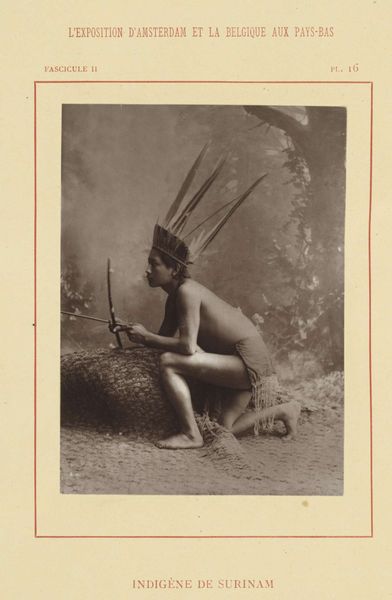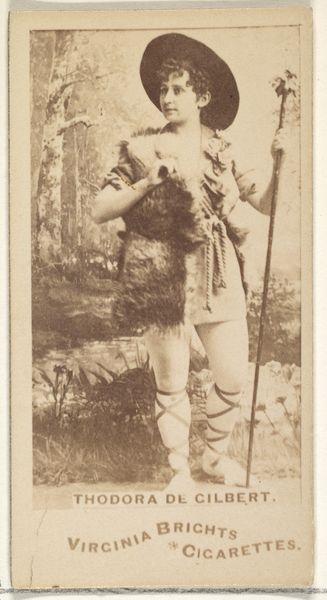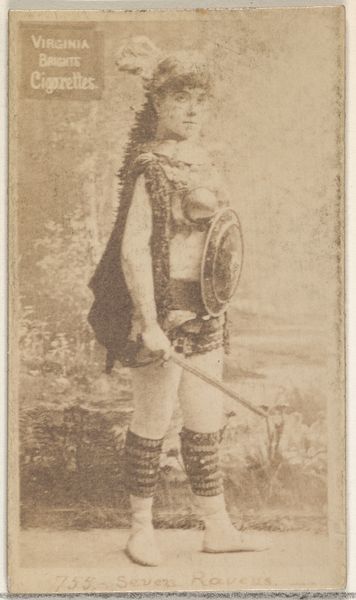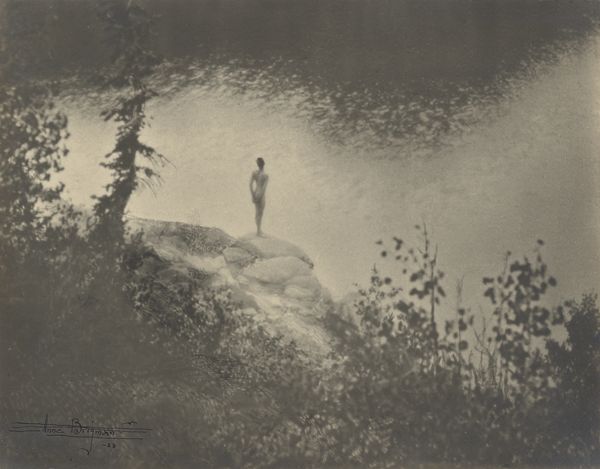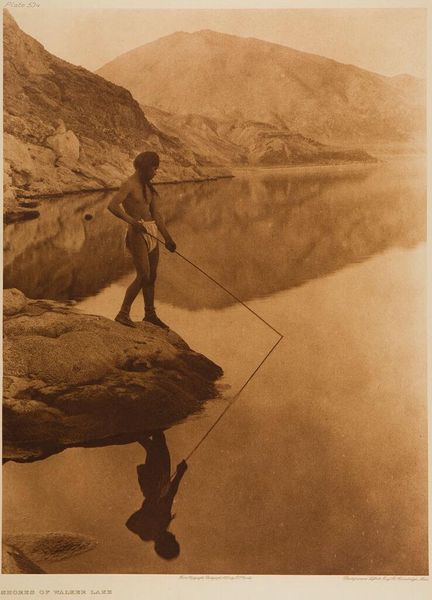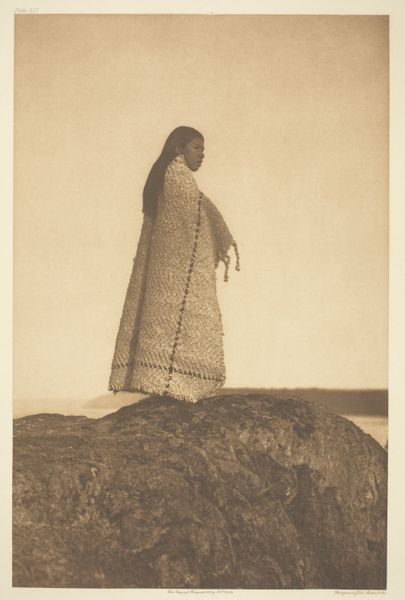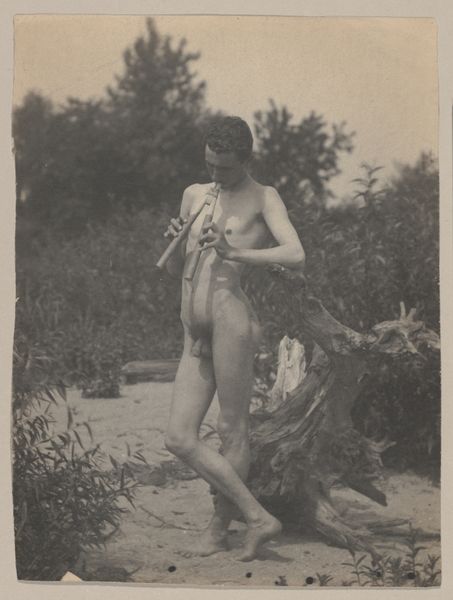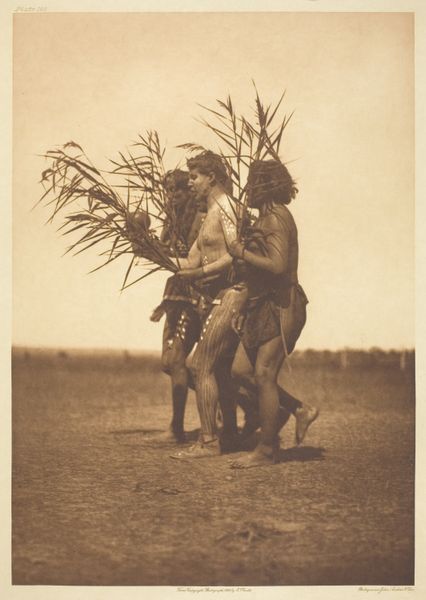
photography, gelatin-silver-print
#
portrait
#
pictorialism
#
photography
#
gelatin-silver-print
#
indigenous-americas
Dimensions: 39.1 × 29 cm (image/paper); 55.5 × 45.7 cm (mount)
Copyright: Public Domain
Curator: Here we have Edward S. Curtis’s “The Bowman,” taken in 1915. Curtis is well known for his extensive, if somewhat controversial, documentation of Native American life in the early 20th century. Editor: There's an ethereal, almost dreamlike quality to this. The figure stands so boldly against the soft, blurry backdrop, highlighting the raw textures of the rock. Curator: Indeed, the photograph is part of Curtis’s larger project, “The North American Indian,” intended to document what he perceived as a vanishing race. This photograph is one of many aiming to capture the supposed essence of indigenous culture. It was circulated widely as a symbol of an untouched past. Editor: Interesting. I find the photograph provocative from a materialist standpoint. Think about the process—the photographic emulsion, the printing techniques employed to create this specific soft focus and tonal range. This wasn’t simply a snapshot; it was constructed through conscious choices regarding materials and methods. The figure's striking pose also prompts me to reflect on its intended viewer, considering how such an image participates in broader political dynamics and contributes to stereotypical depictions. Curator: Absolutely, and that touches upon the central criticism leveled against Curtis's work. Many believe he staged his photographs, sometimes providing subjects with traditional clothing and props they no longer used in daily life, thus reinforcing romanticized, and arguably, inaccurate portrayals. His project certainly reveals more about turn-of-the-century American anxieties and attitudes than about the actual lived experiences of Native Americans. Editor: And what about the labor involved? The entire infrastructure required for Curtis to travel, take these photographs, and disseminate them reveals hidden hierarchies and economic structures. It emphasizes questions about who profits from these images, who gets to represent whom, and for what purpose. Curator: A valid point. The context is undeniably complex and problematic. Viewing the photograph through a contemporary lens, it is crucial to be mindful of the ethical considerations regarding representation and power. "The Bowman" invites viewers to engage critically with its historical legacy and think about its role in shaping perceptions about indigenous peoples. Editor: I agree. This artwork acts as a mirror, reflecting not just the portrayed subject but the social, political, and material circumstances of its own making. Looking closely, it unveils a complex web of human ingenuity and cultural appropriation.
Comments
No comments
Be the first to comment and join the conversation on the ultimate creative platform.


